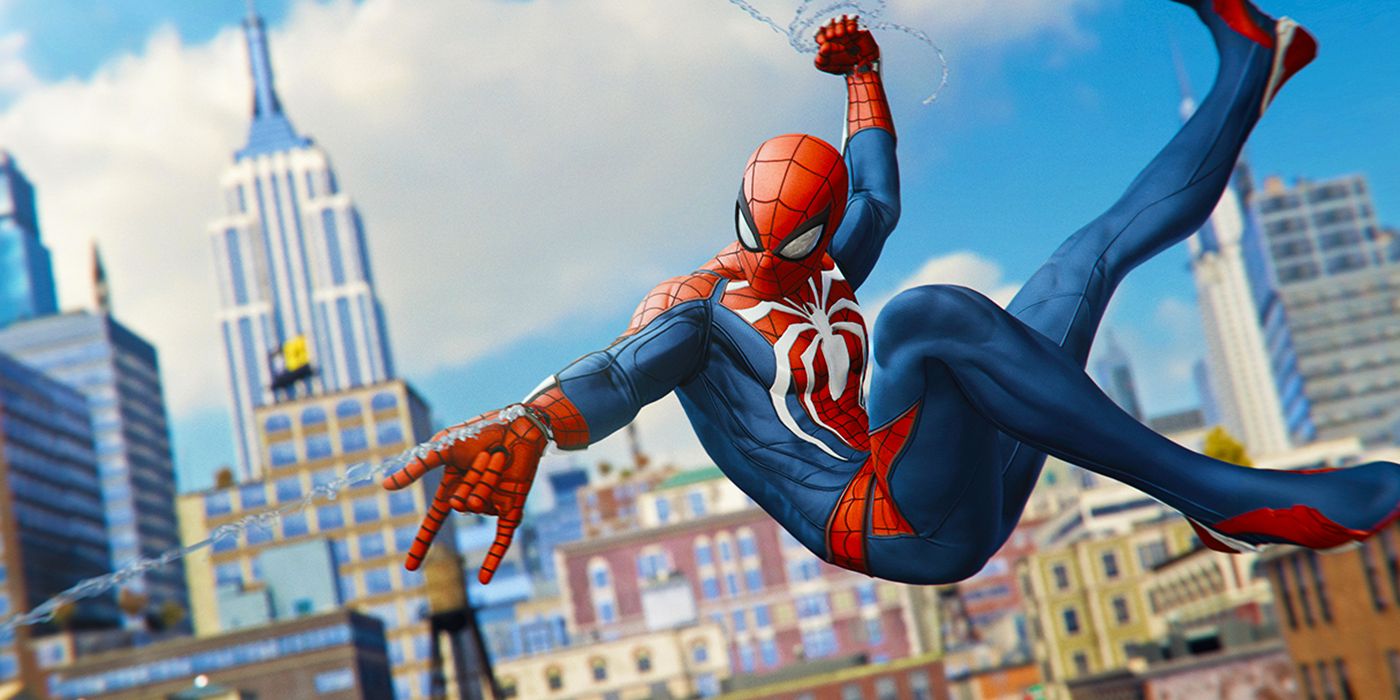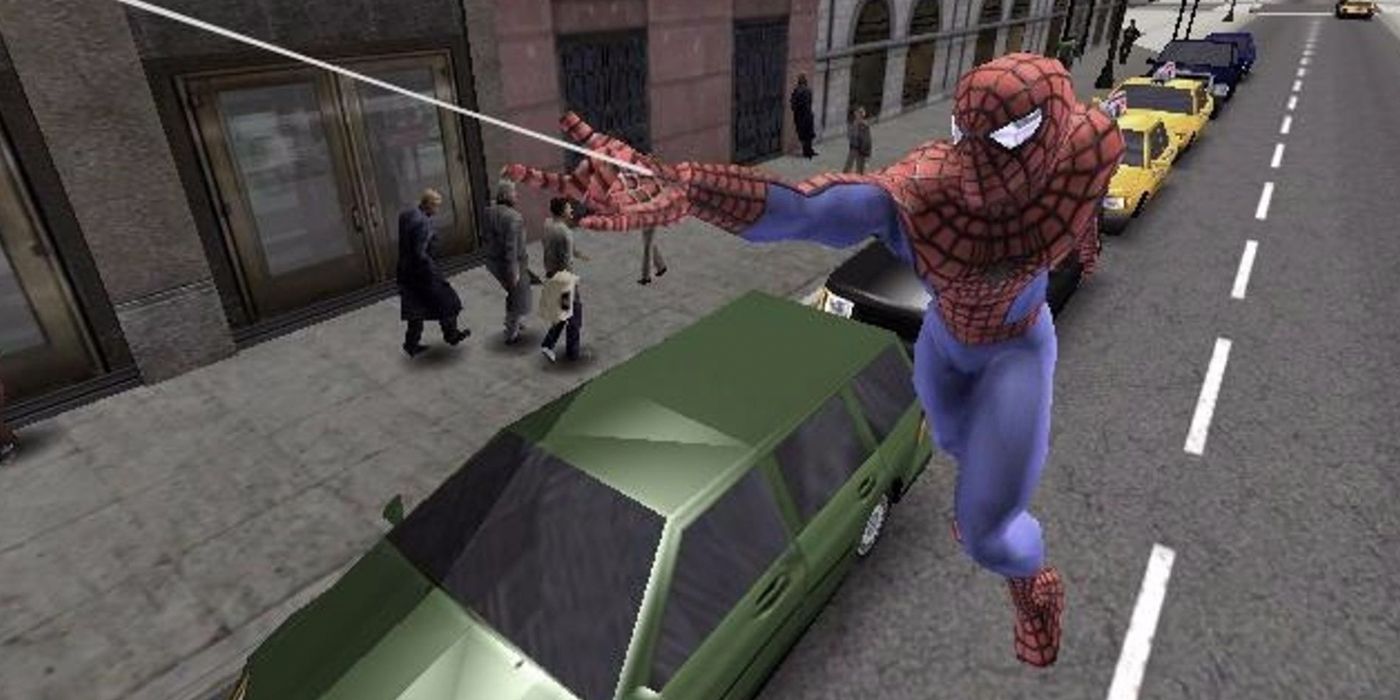One of the most highly acclaimed PS4 exclusives is Marvel’s Spider-Man. Since its release back in 2018, the game has continued to bring in new and old fans, and nowadays is considered to be the best Spider-Man game out there. However, before Insomniac came in, there was Spider-Man 2. This game played a huge role in inspiring the direction the Insomniac team took, especially when it came to web swinging mechanics.
Spider-Man 2 released back in 2004 and quickly gained a strong reputation. It was the first open-world Spider-Man game, and the title garnered popularity for its phenomenal web swinging mechanics. Spider-Man 2 featured a realistic physics driven movement system, designed and developed by Jamie Fristrom. Webs actually attached to buildings rather than being arbitrarily shot into the sky. Marvel’s Spider-Man is very much a love letter to Spider-Man 2 given the level of influence Spider-Man 2 had upon it.
Both games stand out among the other slew of Spider-Man games because of the realistic traversal mechanics found within them. Spider-Man 2 showed how effective an open-world Spidey game could be with the right physics and momentum. Half the fun of the game was just swinging around the city, finding ways to keep Spider-Man’s momentum up while pulling off some amazing tricks. Every time a player shoots out a web in both Spider-Man 2 and Marvel’s Spider-Man, they’re met with the exhilarating rush of traversing New York as if they actually are Spider-Man. In fact, both games are so successful with their movement systems that players will often find themselves wanting to improve their traversal abilities. There is nothing better than pulling off an amazing transition from building to building or pulling off some super difficult tricks midway through dodging skyscrapers.
Marvel's Spider-Man VS Spider-Man 2: Web Swinging Mechanics
Insomniac has definitely improved upon some fan favorite abilities and traversal tactics originally seen in Spider-Man 2. The charge jump allows Spider-Man to quickly gain height to the point where he can leap across multiple buildings with ease. Both games implement this tactic perfectly and it gives the player the ability to easily switch before ground and swing based movement. In Spider-Man 2, the web zip didn’t do much for the player. It didn’t allow Spider-Man to travel very far and often led to him losing momentum when switching between web zipping and web swinging. Given how critical momentum sustainability is to a good Spider-Man game, the feature quickly became obsolete. In Marvel’s Spider-Man, web zipping takes on two versions: one allows Spidey to quickly boost off of a perch point while the other simply lets him boost forward and gain more momentum.
When it comes to ground-to-air traversal, Marvel’s Spider-Man is definitely the winner. While Spider-Man 2 did allow for wall running and transitions, the game had many limitations. Often, the player would lose momentum when switching between swinging and running which limited the range of traversal Spidey could take. Web swinging is not simply about being able to shoot a web from building to building. Marvel’s Spider-Man has integrated web swinging perfectly into the game’s parkour mechanics. With the introduction of perch areas, Spidey can easily switch between web swinging to jumping off of a building, an action that garners him a lot of momentum. Carefully timed swinging between structures can yield some awesome transitions and movement animations. When it comes to wall running, the player can easily shift from swinging to running across the side of a building to leaping off and going back into swinging. These traversal tactics not only highlight the movement capabilities of the new web swinging system, but it also provides players with a lot more creativity when exploring the city.
Marvel’s Spider-Man is a clear improvement on Spider-Man 2, having taken much of its inspiration from the original 2004 game. Spider-Man 2 will forever maintain high praise for the advancements it brought to web swinging and open-world Spidey games, but Marvel’s Spider-Man has seemingly taken the title of best Spider-Man game. Where Spider-Man 2 fell short, Insomniac was able to improve upon and create the most realistic web swinging system to date.


